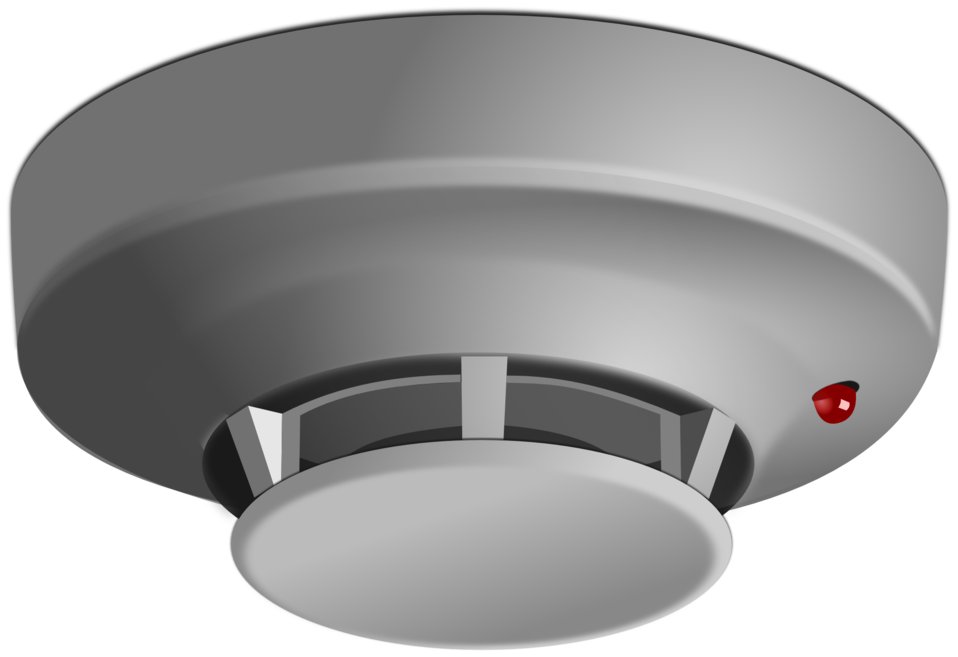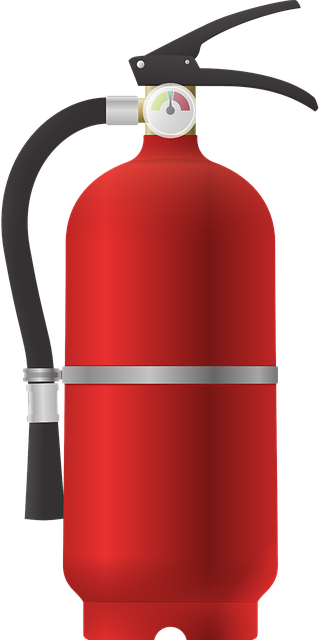When people think of home security, they often think of burglary-related security devices. For example, alarm systems and cameras go a long way towards alerting customers to suspicious activity around their home. However, we also recommend adding another type of security equipment that can prove at least as important. Fire security devices often save our customers’ homes in the case of an emergency. In other cases, these fire security devices even save lives! They do so by alerting residents to fires, helping to stop fires from getting out of control, and even helping people to escape their properties safely. In this post, we share some of the best life safety devices to add to your home’s security plan.
First, we’ll share some devices that you can connect to your alarm system. These include a few different type of detectors that fall under the “fire detection” umbrella. From there, we’ll look at a couple non-alarm related fire security ideas. These include devices to stop fire in its tracks, as well as some equipment to help escape during an emergency. Now, let’s get started with a look at alarm-connected fire detection!
Alarm-Connected Devices
We consider a security system part of the “backbone” of a complete security plan. Of course, we already pointed out the ability an alarm provides to alert you to a break-in. Furthermore, we can also add monitored fire detection onto your alarm. When we install an alarm on a new house, we can plan on adding this security in advance. This involves running wiring to the locations where we later install detectors. When working with an existing house, we can use wireless detection. In this section, we’ll break down the three major types of detectors that fit within the “fire safety” category. For starters, let’s look at how monitored smoke detection works when tied into an alarm system.

Adding monitored fire detection to your alarm ensures that a fire in your home will be met with a response from your local fire department.
Smoke Detectors
When most people think of “fire” detection, they’re really thinking of smoke detection. These detectors recognize the presence of smoke, and then activate your alarm system. In turn, this alarm signal calls out to our central station to create a fire department dispatch. We generally install these detectors at the top and bottom of every staircase to keep fires from spreading to different floors undetected. Bedrooms also make great landing spots for smoke detectors. However, each home has certain areas that deserve fire security, but not in the form of a smoke detector. In these cases, installing heat detectors can cut down on false alarms. Now, let’s take a look at how these detectors work.
Heat Detectors
As you can likely tell from their name, heat detectors require a rise in a room’s heat, rather than the presence of smoke, to create an alarm. Areas near stoves make a great spot for a heat detector. In these areas, the smoke from cooking would create false alarms from a smoke detector. Therefore, we opt for a heat detector instead. The same goes for garages, as well as areas near bathrooms. The exhaust from cars and the steam from showers, respectively, would make these areas prone to creating false alarms with smoke detectors nearby. At this point, we’ve looked at the two main types of fire detection for your alarm. Last but not least, let’s look at a life safety device that often gets classified in the same category as smoke and heat-detecting equipment.
Carbon Monoxide Detectors
A couple years back, we created a post outlining Residential Smoke Alarm Requirements in Massachusetts. In that post, we shared our state’s required locations for different life safety devices in homes being built, sold, or renovated. Moreover, we described the 2006 addition of carbon monoxide detectors to the list of required life safety devices in homes. As of that year, our state requires homes to have carbon monoxide detectors on each level. Additionally, homeowners have to install these detectors within 10 feet of all sleeping areas. This makes it much harder for carbon monoxide (or “CO”) to build up to dangerous levels without warning.
When attached to your security system, CO detectors will create a central station and fire department response to a carbon monoxide-related emergency. Just as with monitored smoke and heat detection, this extra layer of security can easily save the life of a loved one. Even if a resident sleeps through the siren response, the fire department can rescue them upon arrival. At this point, you’ve seen how your alarm can add fire security to your home. Next, let’s see how we can also add important non-monitored life safety.
Non-Connected Fire Security
In addition to fire detection devices, we also recommend adding some non-alarm related equipment. Obviously, having devices alert you to a fire is always important. However, you still need a way to fight fires, as well as escape from them if worst comes to worst. In this section, we’ll discuss a couple of these devices that can help you stop the spread of a fire and escape during an emergency. We’ll start with a look at where you should consider adding fire extinguishers in your home. Then, we will look at some escape devices available to homeowners.

Having fire extinguishers at the ready greatly increases your chance to stop a fire in its tracks before it spread to other areas of your home.
Fire Extinguishers
A longtime staple of the life safety industry, fire extinguishers allow you to stop manageable fires in their tracks. This helps prevent small accidents around the house from turning into disasters. Therefore, we recommend keeping them in the most important and vulnerable areas of your home. For example, bedrooms make great places for extinguishers. People spend more time in these rooms than any other in the home. Additionally, residents are often caught sleeping during a fire. Placing extinguishers in bedrooms allows residents to have an extinguisher in hand when they go out to investigate a potential fire after hearing a smoke alarm.
In addition to bedrooms, areas of your home in which fires start the most also deserve adding fire extinguishers. This includes kitchens, rooms with fireplaces or furnaces, and basements. As a general rule, having at least one extinguisher near common areas on each floor also adds considerable fire security. Now, let’s look at devices you can use when extinguishing a fire is not longer an option.
Fire Escape Devices
As we pointed out above, homeowners often get caught in their bedrooms during fires. Unfortunately, it’s often too late to try putting a fire out at this point, making escape the best option. Rather than trying to run through a burning home, we recommend having escape devices on hand for this scenario. Rope emergency fire ladders, such as this model by QWORK, quickly connect to window frames to allow escape from upper-story bedrooms. Collapsible escape ladders such as this Kidde model offer this security in an easy-to-store form, deploying quickly upon being opened by a user. Having an escape device in each upper-story bedroom can provide the safest means of exit possible to all of a home’s residents during a fire.
Putting it All Together and Adding Fire Security to Your Home
We hope that this post helps give you some ideas to add valuable fire security to your home. Additionally, we encourage you to contact us with any questions you may have. We work with customers to add life safety on a regular basis and will happily point you in the right direction. Furthermore, we also offer free site surveys to both new and existing customers alike. During our visit, we can address any fire-related concerns you may have. Moreover, we can make suggestions based on our own observations of your property. Together, we can create a plan to keep your home and your loved ones as safe and secure as possible!
All images used under the Creative Commons Public Domain (CC0) License.
